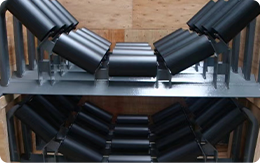 Afrikaans
Afrikaans  Albanian
Albanian  Amharic
Amharic  Arabic
Arabic  Armenian
Armenian  Azerbaijani
Azerbaijani  Basque
Basque  Belarusian
Belarusian  Bengali
Bengali  Bosnian
Bosnian  Bulgarian
Bulgarian  Catalan
Catalan  Cebuano
Cebuano  Corsican
Corsican  Croatian
Croatian  Czech
Czech  Danish
Danish  Dutch
Dutch  English
English  Esperanto
Esperanto  Estonian
Estonian  Finnish
Finnish  French
French  Frisian
Frisian  Galician
Galician  Georgian
Georgian  German
German  Greek
Greek  Gujarati
Gujarati  Haitian Creole
Haitian Creole  hausa
hausa  hawaiian
hawaiian  Hebrew
Hebrew  Hindi
Hindi  Miao
Miao  Hungarian
Hungarian  Icelandic
Icelandic  igbo
igbo  Indonesian
Indonesian  irish
irish  Italian
Italian  Japanese
Japanese  Javanese
Javanese  Kannada
Kannada  kazakh
kazakh  Khmer
Khmer  Rwandese
Rwandese  Korean
Korean  Kurdish
Kurdish  Kyrgyz
Kyrgyz  Lao
Lao  Latin
Latin  Latvian
Latvian  Lithuanian
Lithuanian  Luxembourgish
Luxembourgish  Macedonian
Macedonian  Malgashi
Malgashi  Malay
Malay  Malayalam
Malayalam  Maltese
Maltese  Maori
Maori  Marathi
Marathi  Mongolian
Mongolian  Myanmar
Myanmar  Nepali
Nepali  Norwegian
Norwegian  Norwegian
Norwegian  Occitan
Occitan  Pashto
Pashto  Persian
Persian  Polish
Polish  Portuguese
Portuguese  Punjabi
Punjabi  Romanian
Romanian  Russian
Russian  Samoan
Samoan  Scottish Gaelic
Scottish Gaelic  Serbian
Serbian  Sesotho
Sesotho  Shona
Shona  Sindhi
Sindhi  Sinhala
Sinhala  Slovak
Slovak  Slovenian
Slovenian  Somali
Somali  Spanish
Spanish  Sundanese
Sundanese  Swahili
Swahili  Swedish
Swedish  Tagalog
Tagalog  Tajik
Tajik  Tamil
Tamil  Tatar
Tatar  Telugu
Telugu  Thai
Thai  Turkish
Turkish  Turkmen
Turkmen  Ukrainian
Ukrainian  Urdu
Urdu  Uighur
Uighur  Uzbek
Uzbek  Vietnamese
Vietnamese  Welsh
Welsh  Bantu
Bantu  Yiddish
Yiddish  Yoruba
Yoruba  Zulu
Zulu Understanding the Functionality and Importance of Tail Pulley in Conveyor Systems
Understanding Tail Pulleys Essential Components in Conveyor Systems
In the world of industrial machinery and conveyor systems, tail pulleys play a crucial role in ensuring the smooth and efficient operation of material handling processes. Tail pulleys are primarily located at the end of a conveyor belt system and are critical for guiding the belt, maintaining tension, and supporting the belt's return path. This article explores the importance, design, and functionality of tail pulleys, along with their applications and considerations in various industries.
What is a Tail Pulley?
A tail pulley is a cylindrical component that serves as the last roller in a conveyor belt system. Typically found at the conveyor's discharge end, it helps in returning the conveyor belt back to its starting position after it has completed its cycle of transporting materials. The functionality of a tail pulley is not limited to merely guiding the return path; it also plays a vital role in managing belt tension and facilitating the efficient transport of materials.
Importance of Tail Pulleys
The effectiveness of a conveyor system largely depends on the proper functioning of its components, and tail pulleys are no exception. Their importance can be summarized in several key points
1. Belt Alignment Tail pulleys help maintain the proper alignment of the conveyor belt, thus preventing off-tracking that could lead to wear and tear or, in severe cases, belt failure.
2. Tension Maintenance By holding one end of the conveyor belt, tail pulleys ensure the necessary tension is maintained throughout the belt. Proper tension is crucial for effective operation, as it affects the belt's ability to transport materials safely and efficiently.
3. Ease of Maintenance A well-designed tail pulley facilitates easier maintenance and replacement processes. This is particularly important in industrial settings where downtime can significantly impact productivity.
4. Reduced Wear By ensuring the belt follows the correct path, tail pulleys contribute to reduced wear and tear on both the belt and the supporting rollers, leading to longer service life and lower operational costs.
tail pulley

Design Considerations
The design of tail pulleys varies depending on the specific application and operating conditions they will face. Several factors play a role in determining the appropriate design
1. Material Tail pulleys can be made from various materials, including steel, aluminum, and composite materials. The choice often depends on the environmental conditions (e.g., wet or dry) and the type of materials being transported (e.g., abrasive materials).
2. Size and Dimensions The diameter and width of a tail pulley need to match the dimensions of the conveyor belt system. Proper sizing ensures effective performance and accommodates the weight and type of materials being conveyed.
3. Lagging Tail pulleys can be equipped with lagging, which provides additional friction to the belt to prevent slippage, especially when handling heavy or inclined loads. Common lagging materials include rubber and ceramic.
4. Sealing and Protection In many industrial applications, tail pulleys are subject to harsh conditions, including dust and moisture. Proper sealing and protection measures are critical to extend the life of the pulley and reduce maintenance requirements.
Applications Across Industries
Tail pulleys find applications in various industries, including mining, manufacturing, agriculture, and food processing. In mining, for instance, they are used to transport ores and minerals over long distances. In manufacturing, tail pulleys facilitate the movement of components throughout assembly lines, while in agriculture, they may be used for transporting bulk materials like grains or fertilizers.
Conclusion
Tail pulleys are vital components of conveyor systems that contribute significantly to their efficiency and longevity. Understanding their function, importance, design considerations, and applications is crucial for industries that rely on material handling processes. As technology continues to evolve, advancements in tail pulley design may lead to even greater efficiencies and performance in the future, further improving the productivity of industrial operations around the globe.
-
Revolutionizing Conveyor Reliability with Advanced Rubber Lagging PulleysNewsJul.22,2025
-
Powering Precision and Durability with Expert Manufacturers of Conveyor ComponentsNewsJul.22,2025
-
Optimizing Conveyor Systems with Advanced Conveyor AccessoriesNewsJul.22,2025
-
Maximize Conveyor Efficiency with Quality Conveyor Idler PulleysNewsJul.22,2025
-
Future-Proof Your Conveyor System with High-Performance Polyurethane RollerNewsJul.22,2025
-
Driving Efficiency Forward with Quality Idlers and RollersNewsJul.22,2025





























